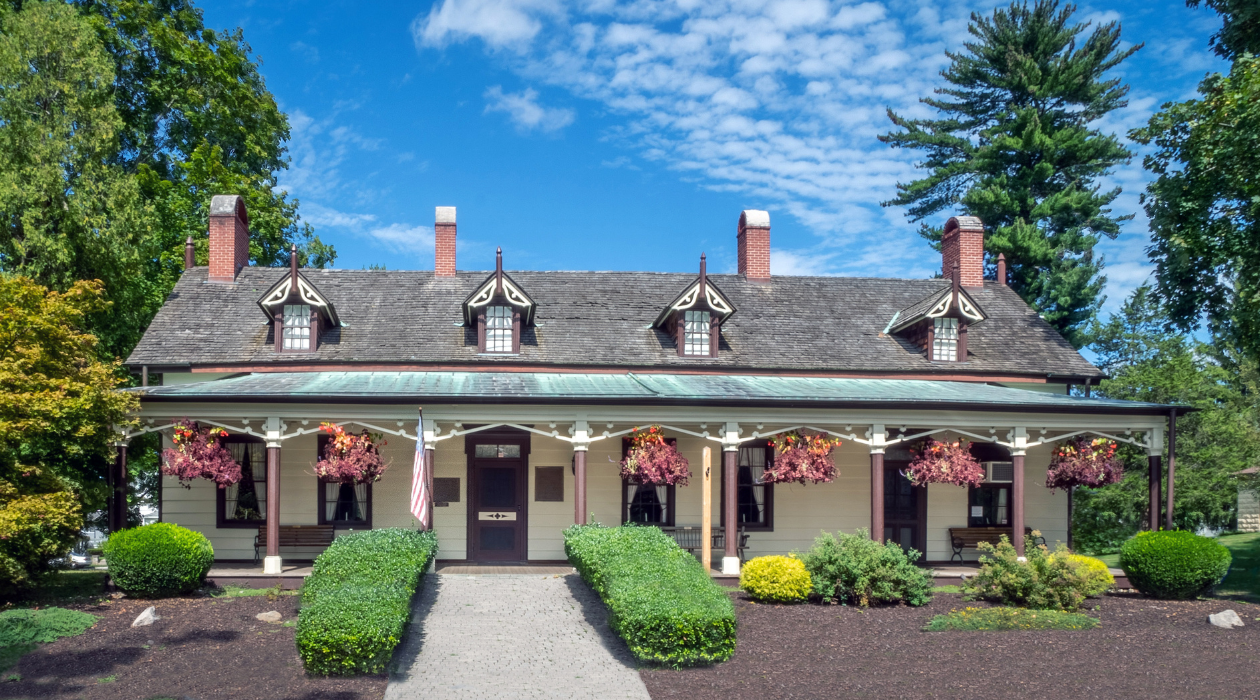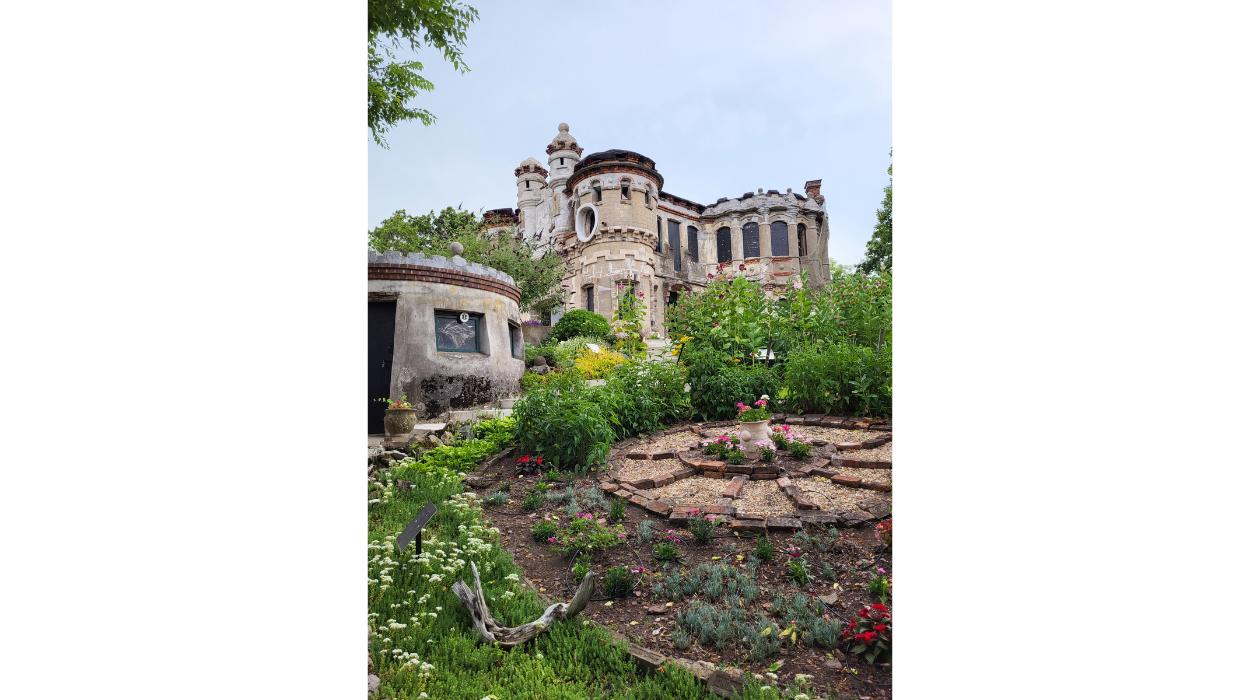-
Things to Do
-
Plan
-
About


Dutchess County’s history and culture have been shaped by Indigenous peoples, First Nations and Native Americans that call the Hudson Valley home. Immerse yourself in vibrant Indigenous art from contemporary creators, discover natural destinations and historic sites important to the community and examine history through enriching events.

Saturday, Nov. 9, 1 p.m. at Mount Gulian Historic Site, Beacon
The Lenape People were among the first inhabitants of the Hudson Valley region. Visit Beacon’s Mount Gulian Historic Site for a discussion of Lenape history, culture and current resurgence. In 1685, Gulian Verplanck and Francis Rombout purchased the land Mount Gulian stands on from the Native Amerians who lived there. The 85,000-acre parcel was exchanged for about $1,200 worth of goods. Prior to this purchase, the Lenape used this property as a seasonal encampment along the Hudson River. Scholar Harv Hilowitz from the Maritime Museum in Kingston presents this discussion and examines the Lenape diaspora, as well as the current renaissance and return to the area. For more, click here.
Through February 2025 at Frances Lehman Loeb Art Center, Poughkeepsie
Interact with Indigenous art at The Loeb, located on the Vassar College campus in Poughkeepsie. This exhibition "My Grandmother's Whispers" features a variety of prints from artisits Dyani White Hawk of the Siċaŋġu Lakota Nation and Wendy Red Star of the Crow Nation. These pieces were created at Shadow Institute of the Arts, a Crow Nation creative hub dedicated to cultivating and elevating Indigenous artists. The title of this exhibition speaks to the tradition of knowledge being passed down from martriarchal figures in Indigenous communities. Also on display are beaded objects crafted by Cayuga artists Lorna Hill and Samuel Thomas, similarly touching on the theme of ancestral wisdom. The Loeb is free to visit, click here for more information.
Related: Top 10 Events in November

Tour Mesier Homestead in the charming Village of Wappingers Falls, and learn about the Wappinger (Wappani) tribe’s culture through a collection of artifacts. The name Wappinger is derived from “Wapinkw”, meaning opossum and Eastern People. The Dutch added "er" to the name. The Wappinger peoples were related to the Algonquins, and inhabited the lands east of the Hudson River stretching from New York City north to the capital region. More than 2,000 objects belong to the collection at Mesier Homestead, some of which date back nearly 8,500 years ago. Tools like scrapers, hatchets, knives and projectiles like spear points and arrowheads provide insight into the approach and lifestyle of the Wappinger people. Professor and archaeologist Thomas Lake examined and cataloged the collection in 2012, helping to tell the story of hunting, farming, trading and celebrations of the Wappinger. See these items on a guided tour, offered on weekdays by reservation and on select Sundays. To make your reservation, click here.
.png)
Participate in an iconic tradition by walking stretches of the Appalachian Trail through Dutchess County. The Harlem Valley Appalachian Trail Conservancy strives to celebrate and conserve the cultures of the diverse peoples that have called these lands home. Schaghticoke ancestral homelands cover the Hudson Valley and Harlem Valley regions of New York, and extend through neighboring portions of modern-day Massachusetts and Connecticut. In fact, historical documentation of the Schaghticoke peoples in this region dates to the 1670s. Schaghticoke means “the mingling of waters”, and carries the special significance of referring to where local watersheds join as well as the merged union of related Algonquin speaking tribes. For more resources from Schaghticoke First Nations, click here.
Today, Appalachian Trail through-hikers can climb to the top of Schaghticoke Mountain via Dutchess County trailheads. On these trails, visitors can see the beloved Dover Oak, the oldest known tree on the AT which has a 22-feet circumference and is estimated to be over 300 years old. Be sure to keep the tranquil trails and beautiful landscapes of Eastern Dutchess as you found it by “carrying in-carrying out”. For more hidden-gem hikes, get our Zen Finder outdoor experience passport.

There is little historical evidence that the Native American tribes living along the Hudson River—The Wappinger, The Algonquin and the Lenni-Lenape, among others—also inhabited Pollepel Island. However, they were aware of the island and there is documentation supporting references to it. One group referred to the island as “Manahtis”, meaning “small island”. Another designated it the “divider of the waters”. Though few artifacts have been uncovered on the island, major excavations uncovered well-developed Indigenous encampments on the eastern shore of the Hudson River facing Pollepel Island directly. These researchers discovered and identified oyster shell mounds and other tools. In fact, Francis Bannerman VI found a centuries-old arrowhead on the island, so Indigenous activities on the island may be revealed in the future through ongoing research. According to local legend, the island was considered haunted by several groups, and the Dutch sailors in the area often told fanciful tales of what happened to them on and around the island.
Today, from May-October, Bannerman Castle on Pollepel Island can be toured via ferry ride from Beacon. Just steps away from the MTA Beacon Train Station, board the Estuary Steward and explore the island, discovering the ruins of a medieval-style castle as well as live performances, screenings and living history events. For more, click here.
Chickasaw Business
Hungry for farm-fresh foods? The Hog in the Village of Wappingers Falls serves every palette, from those seeking light and nutritious salads and bowls to hungry diners looking to indulge in outrageous fried chicken sandwiches and other decadent breakfast creations. Husband-and-wife duo Adam and Corrinne Sternberg run this community staple hangout, and while Chef Adam prepares the dishes, you’re most likely to interact with Corrinne when you visit. As a member of the Chickasaw community, Corrinne and The Hog were recently recognized with the official Chickasaw Business Certification, connecting them with other Chickasaw-owned businesses through a registry.
“Having The Hog registered as a certified Chickasaw business makes me feel a connection to the tribe beyond recognition of my bloodline. It means my contributions to the community are valued as a contribution to the tribe’s community as well, which is an honor. Above all else, it’s a means to showcase my pride for the tribe on a public level,” Sternberg says.
“Because of this, I was able to connect with a Chickasaw follower who actually worked on the reservation and we look forward to connecting more. I hope this certification paves the way for more of these connections, because I know there are more of us here in the Hudson Valley!”
To see the ever-changing menu at The Hog, click here.
Covid-19 Information
Our top priority is the safety, health, and wellbeing of our community, its residents and visitors.
Information for visitors & residents Information & Resources